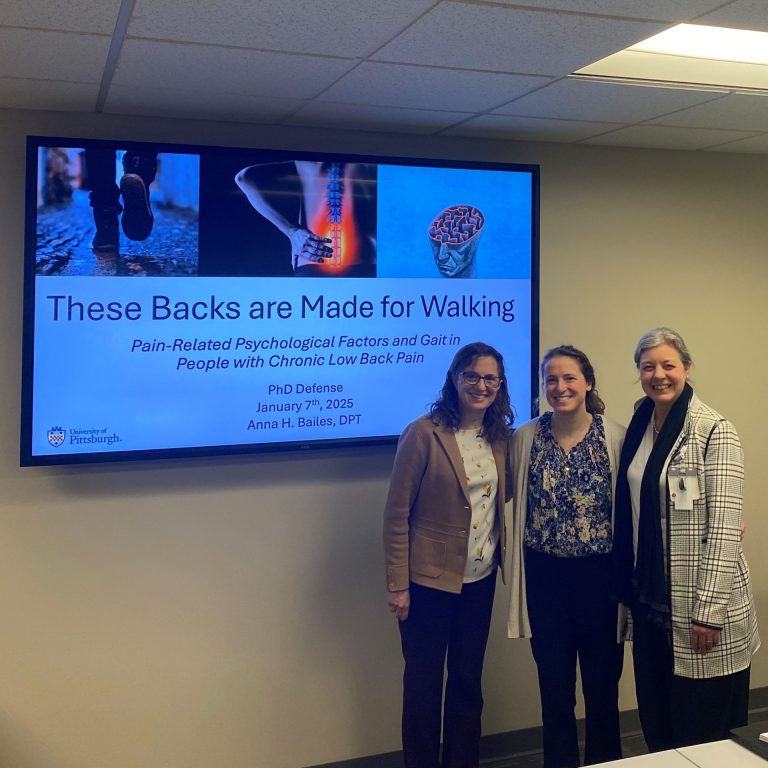

General
Anna Bailes: Successful Defense
Anna Bailes successfully defended her dissertation entitled “These Backs are Made for Walking: Pain-Related Psychological Factors and Gait in People with Chronic Low Back Pain”!
Committee Co-Chairs were Gewndolyn Sowa and Rakié Cham and Committee Members included Jennifer Brach, Carol Greco, and Mark Redfern.
See below for an abstract of her work.
Chronic low back pain (cLBP) is the leading cause of disability globally. It is associated with gait impairments that increase risk for poor overall mobility and adverse health events, such as falls and hospitalizations. While physical therapy can effectively improve gait, pain-related psychological factors–such as fear-avoidance or pain catastrophizing–may act as barriers to successful physical therapy interventions. Fear-avoidance and pain catastrophizing are also known contributors to movement impairments, further complicating the effectiveness of standard physical therapy interventions. However, the impact of pain-related psychological factors on gait impairments in cLBP has not been fully explored. The objective of this dissertation is to 1) determine the associations between pain-related psychological factors and gait in individuals with cLBP, and 2) investigate attention-gait interference as a potential mechanism underlying these associations. This dissertation begins by outlining the motivation for its Specific Aims through observation of patterns in healthcare utilization for over 500,000 patients with low back pain. Next, Aim 1 explores associations between pain-related psychological factors and gait quality, and Aim 2 investigates the impact of these pain-related psychological factors on gait dual-task cost. Finally, this dissertation concludes with a description of an inertial system that may facilitate movement monitoring outside of a controlled laboratory setting, paving the way for future translation and implementation. Results from Aim 1 suggest that fear-avoidance may contribute to slow gait speed and should be considered as part of multi-modal gait interventions in cLBP. Results from Aim 2 suggest that pain catastrophizing may be associated with altered step length adaptations under dual-task conditions, but otherwise, this population experiences a relatively low gait dual-task cost. This dissertation builds upon existing evidence for psychologically-informed physical therapy, expanding its applications to gait rehabilitation. Results also support the continued exploration of attention-gait interactions as a potential treatment target for improving gait in this population.
People
Research

2021


